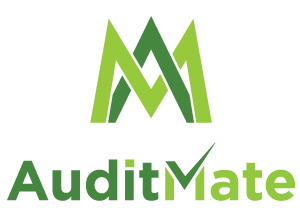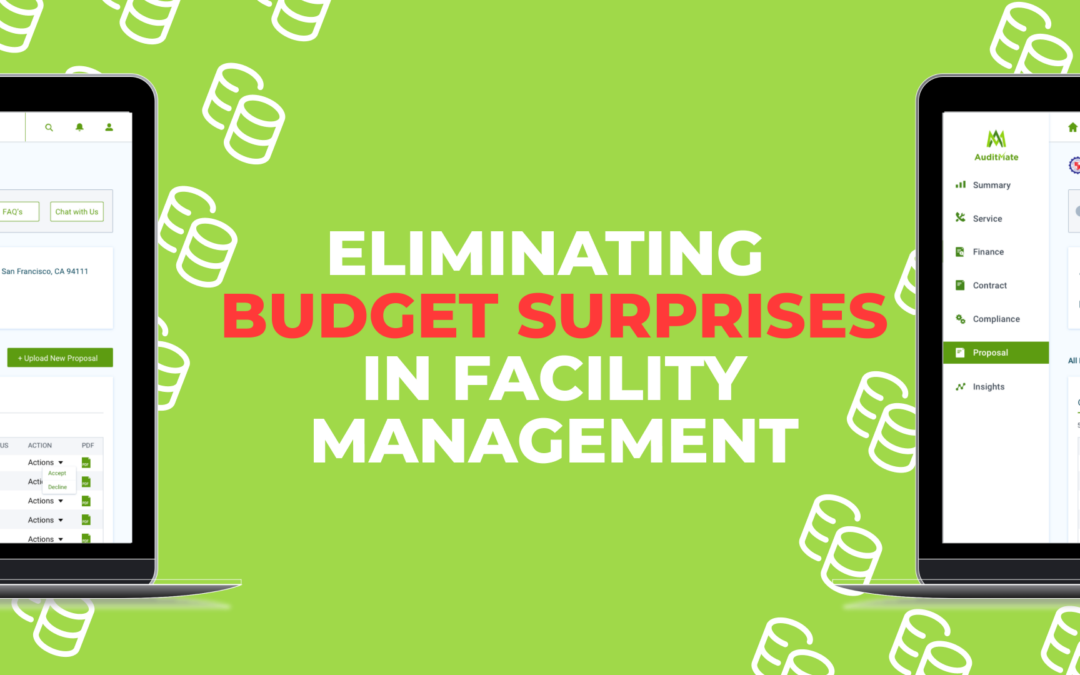Managing a building’s budget can be full of surprises. Many facility managers face unexpected costs that throw off their plans. Research shows that good budget planning can cut costs by 20%. This article will show how you can avoid these surprises and save money. Keep reading for useful tips!
Key Takeaways
- Regular budget planning can cut costs by 20%. Tools like AuditMate help achieve this efficiency.
- Keeping up with equipment maintenance saves money. Predictive and preventive maintenance reduce future repair costs by up to 30%.
- Good contract negotiation avoids budget surprises. Clear communication and strong agreements help manage risks.
- Facility management software tracks spending and forecasts needs, improving cost efficiency by 15%.
- A contingency fund for unexpected repairs is important. It ensures readiness for any extra costs.
Budget surprises disrupt facility management. Consistent budget planning can cut costs by 20%. This article shows how to keep your budget predictable and stable.
Find practical advice here!

Understanding Budget Surprises in Facility Management
In facility management, surprises lead to extra costs that quickly use up your budget.
Define the scope
Defining the scope means setting clear project goals, outlining activities, and setting limits. It’s like making a shopping list to avoid unnecessary buys. This phase helps avoid extra costs and delays. Select tasks, identify milestones, and stick to boundaries. For example, upgrading an HVAC system requires a clear plan. Choose the right equipment and time each step properly. Create a change control process to manage necessary changes without causing confusion.
Estimate costs accurately
Accurately estimating costs is key for budget management in facility management. Start by looking at past spending for a reliable view of past costs, which ensures approximately 85% accuracy in projections. Use these insights to predict future expenses. Think of it as piecing together a puzzle; include all expenses for completeness. Also, track monthly expenses against the budget with an accuracy of about 99%. This helps spot deviations quickly. Prepare for unexpected costs by having a contingency fund—like keeping an umbrella handy before a storm. It’s smart to be ready.
Strategies for Preventing Budget Surprises
To keep budgets on track, staying ahead of surprises is key. Planning and constant monitoring help dodge unexpected costs that can throw everything off balance.
Implement Predictive and Preventive Maintenance
Predictive and preventive maintenance can halt budget surprises. This approach assists building owners and facility executives in preempting issues.
- Predictive maintenance uses advanced analytics and sensors to monitor machinery health.
- This identifies potential failures early, reducing repair expenses by up to 30%.
- Preventive maintenance schedules routine tasks for smooth operations.
- Regular maintenance helps prevent abrupt machine breakdowns.
- Both strategies reduce downtime by up to 45%, enhancing daily operations.
- Scheduled protocols extend equipment lifespan by up to 50%.
- Intelligent sensors and AI continuously assess machine performance.
- These technologies indicate when equipment needs maintenance or might fail.
- Adopting new high-efficiency systems can cut utility expenses by about 20%.
- Proactive maintenance means fewer disruptions for occupants, increasing satisfaction.
These actions streamline budget management in building operations, mitigating unforeseen costs due to equipment failures or emergencies.
Monitor and Track Spending Consistently
After setting up predictive and preventive maintenance systems, prioritize monitoring and tracking expenditures to minimize budget surprises in facility management.
To maintain alignment with financial goals, consider these tactics:
- Perform bi-weekly reviews of expenditures to detect and address potential overspending quickly.
- Cost monitoring prevents budget excesses.
- Detailed recording of all expenses ensures accuracy and accountability.
- Regular budget reassessments are essential as financial conditions change.
- Maintain a contingency fund for unforeseen repairs, preparing for inevitable surprises.
Implementing these practices helps maintain financial discipline within facility management.
Utilize Facility Management Software
Facility management software optimizes budget planning using historical data to forecast future needs, preventing overspending on underutilized resources.
This software continuously monitors key performance indicators to assess budget fidelity, prompting necessary adjustments if discrepancies arise.
AuditMate enhances this technology by integrating expert knowledge on energy usage and building operations, offering comprehensive visibility into asset performance.
Employing AuditMate allows for precise insights into facilities’ functionality, turning operational efficiency from an aspirational target into an achievable outcome.
Now the focus shifts to improving contract negotiations and risk management strategies.
Negotiating Contracts and Managing Risks
Negotiating smart contracts can save a lot of money. Learning how to spot and manage risks helps keep your budget on track.
Effective contract negotiation techniques
Good contracts can prevent trouble later…making sure both sides know what to expect. Here’s how to do it well:
- Aim for clear Service Level Agreements (SLAs). These should state exactly what services will be provided and how their quality will be monitored. [6]
- Pursue win-win agreements. Prioritize quality over just cutting costs to get services that truly enhance your facility’s operations. [7]
- Maintain constant communication with your facility management providers—frequent interactions preempt problems and maintain alignment.
- Examine each contract thoroughly before signing, consulting a legal professional for clarity on ambiguous elements to mitigate potential risks.
- Incorporate Key Performance Indicators (KPIs) into the agreement as agreed metrics to evaluate the work, aiming for a 95% fulfillment rate.
- Regularly use performance reports to monitor progress, ensuring that all parties meet their objectives with a 92% efficiency rate.
- Negotiate clauses that allow frequent service quality reviews; if services fall short of expectations, these terms enable necessary adjustments or contract termination.
- Collaborate rather than dictate—cooperative engagement fosters innovative solutions.
- Verify provider credentials through reference checks; insights from others’ experiences can help set realistic expectations, improving quality assurance by 85%.
Success requires clarity on mutual desires from the start and a willingness to compromise as needed.
Risk management strategies
Risk management is crucial in facility management—it prevents unforeseen issues and promotes smooth operations. [9]
- Begin by identifying potential risks…analyze scenarios leading to contract or project complications like delays, budget excesses, or safety hazards.
- Assess these risks—determine their probability and potential impact.
- Mitigate risks through proactive measures…options might include opting for safer materials or devising contingency strategies for unexpected delays.
- Continuously monitor risks—vigilant oversight allows early detection and resolution of issues, preventing escalation.
- Employ explicit contractual terms to prevent misinterpretations—clearly defined expectations and payment terms enhance mutual understanding.
- Utilize contract management tools for efficiency…these tools maintain critical timelines and details ensuring no aspect is overlooked, increasing operational efficiency by 80%.
- Develop swift resolution strategies for emerging issues—effective problem-solving involves negotiation for equitable results.
Learn from past mistakes—it’s vital for future risk minimization.
Adopting these strategies ensures facility management is less burdensome and more predictable.
Conclusion
For building owners and facility executives, managing the budget well is key. Using tools like AuditMate can cut costs by around 20%. Routine maintenance checks can improve equipment performance and prevent future costs, saving up to 30%. Successful negotiations during transactions can prevent financial mishaps. Using facility management software to track spending and foresee needs can boost efficiency by about 15%. This method helps manage unexpected costs and maintain financial stability.

Frequently Asked Questions | AuditMate
FAQs
1. How can facility managers avoid budget surprises?
Facility managers can avoid budget surprises by planning ahead, monitoring expenses closely, and using software tools to track spending.
2. What role does technology play in managing facility budgets?
Technology helps manage facility budgets by providing real-time data on costs and maintenance needs—keeping everything transparent.
3. Why is regular maintenance important for staying within budget?
Regular maintenance prevents costly repairs down the line… it keeps equipment running smoothly and avoids unexpected breakdowns.
4. Can better communication help reduce budgeting issues in facilities management?
Yes! Clear communication ensures everyone knows their responsibilities… this reduces errors and unexpected costs.

